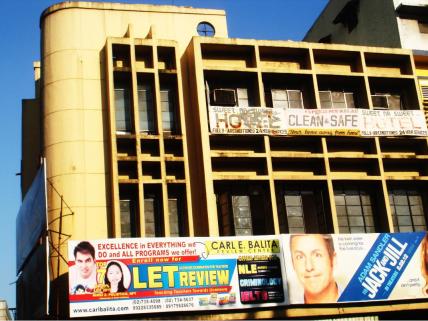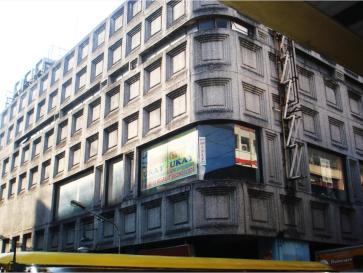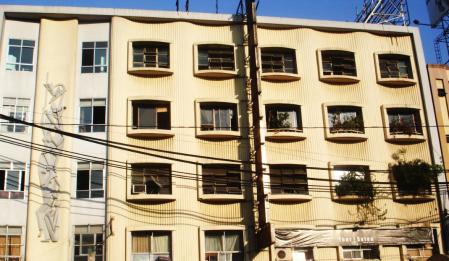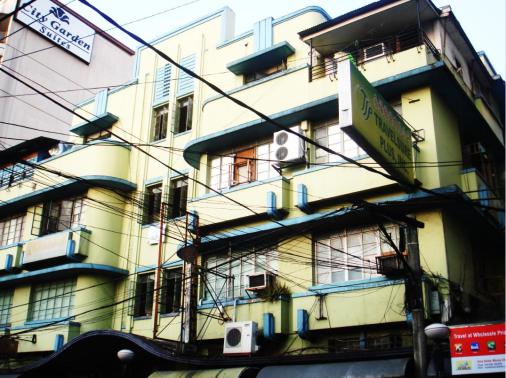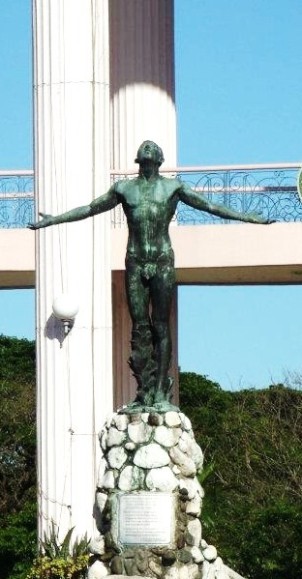After I wrote the catastrophic blog that represents my low-time English. I’m here again to put you inside in another hurricane that will change your reading habit. So today I’m borrowing your understanding to my English words that you may see.
Super Brief Definition about Art Deco
Art deco or deco is an eclectic artistic and design style that began in Paris in the 1920’sand flourished internationally throughout the 1930s and into the World War II era. Art deco represented elegance, glamour, functionality and modernity. Art deco’s linear symmetry was a distinct departure from the flowing asymmetrical organic curves of its predecessor style art nouveau; it embraced influences from many different styles of the early twentieth century, including neoclassical, constructivism, cubism, modernism and futurism and drew inspiration from ancient Egyptian and Aztec forms.
Architectural examples survive in many different locations worldwide, in countries as diverse as China (Shanghai), the UK, Latvia, Spain, Cuba, Mexico, Indonesia, the Philippines, Argentina, Poland, Austria, Germany, Russia, Portugal, Romania, Australia, Canada, New Zealand, India, Brazil, Colombia and the United States. In New York, the Empire State Building, the Chrysler Building and Rockefeller Center are among the largest and best-known examples of the style.
Honestly, the definition above is come from Wiki. Thanks Wiki!
Jungle Hunt for Art Deco Structures here in the Philippines
Whoa! It’s almost 3 o’clock in the afternoon since my company and I met each other at the train Station (Anonas). We have many things to do because of our Final Period of this Sem. We need to finish this for our HOA 2 (History of Architecture 2) to complete its requirements and pass the subject. I think this is our last blog for this Sem. And you know what? I will miss walking around Downtown Manila to photographs its fantastic but not appreciated structures. Hoping I’ll do it again.
My instructor says that Art Deco structures are commonly found in Recto. But it sad to say that I didn’t manage to go to Philippine’s largest Art Deco Complex: The Far Eastern University. In my earlier days of enrolling on college, I remember that I took the entrance exam of this university and passed it. But I didn’t enroll because of its long distance reasons. (Oopps! Too much off to topic na!)
This picture is photographed along Recto. I didn’t know much of it streets but if you go there, you will easily find it. Just look around and use your eyes.
Just looking by this structure, you will see the Art Deco-ness on its own style. Commonly, the sides are made curved and many shaped are on it. I think Art Deco is a combination of different elements in one at a time. Please do watch the movie of my favorite Hollywood actor Adam Sandler. Jack and Jill. *free advertisement!*
Wow! Simple but elegant building, you will attracted by its symmetry. The choice of color is great too. I think I will apply the principles of Art Deco to my design when the time comes.
Still photographed along Recto, you know, Recto is full of adventure. Not because to its reputation as the town of pick-pockets but because on its own landscape. In this picture, you’ll see the LRT rail above. Cable wires are like you’re in Amazon Forrest. It is blocking the view and it is hard to photograph in a good perspective.
Simple but it rocks the world. It has long ribbon window above so the light ventilation could passed through it. Aside for that, it has ukay-ukay store inside where you can buy affordable clothes that will last until 5 days only. Short time, but affordable. That’s my motto.
Whoa… whoa… whoa! I’ve just seen a fine art walking along Recto. That’s what I’m talking about, the cable wires are in everywhere. And the time that we are photographing, along the way there is ongoing rally in front of Quiapo Church. It causes the traffic to where we will next to go. As I remember to what I heard, the rally is for the kids who are hungry because of numb Government. That’s only what I heard.
Walking along Malate, we’ve just found this beautiful lady standing as Art Deco. I am tired mentioning about the cable wires. It makes me angry talaga! The combination of elements was a good idea to build a structure.
I think this blog is not enough to show the beauty of Art Deco. This blog is lack of photos and story to supply your needs about this architecture. All of the things that written here Is just an opinion/comment coming from a student that is finding a way to become an architect.
What did I learned in this blogging activity?
Art is in everywhere, just like in Recto — you need to just look around and use your eyes.
About the Blogger
Writing articles (in tagalog form), Writing Flash Fiction is my hobby, planning to be a Musician like Ely Buendia, planning to be an Architect as well as to be an Author of my own book. I hope my plan will come true. And proud to be Filipino. World Peace.

